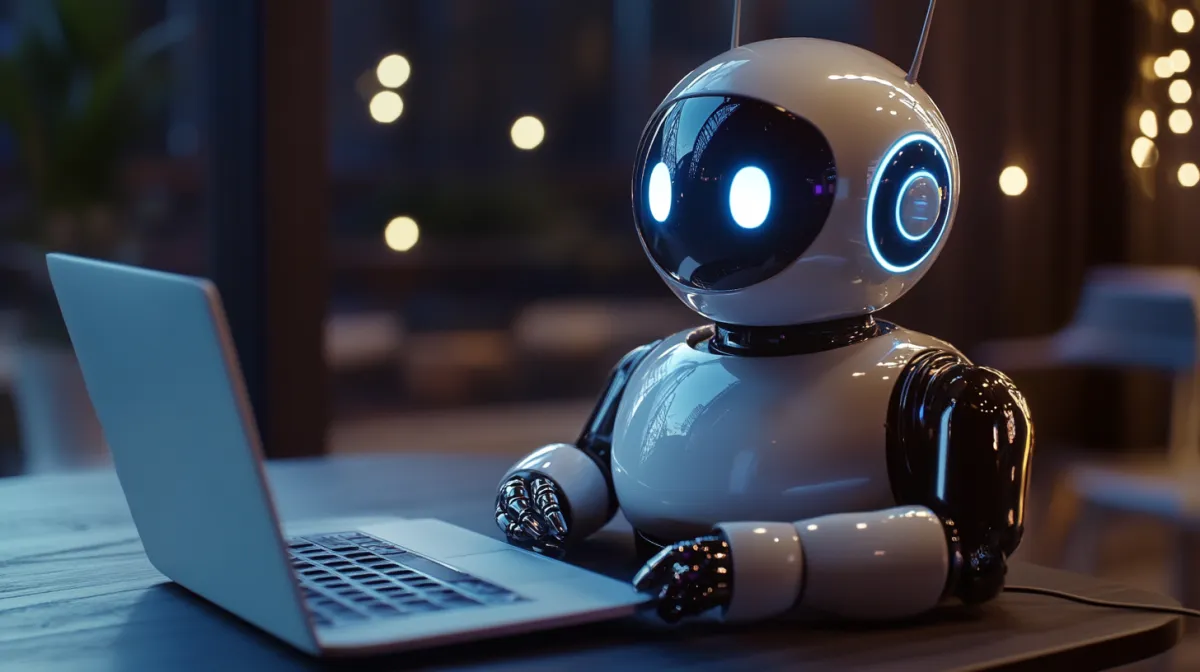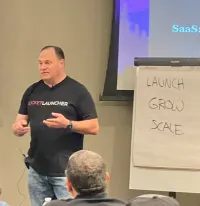
Read Our Blogs!

The Power of Multi-Modal Chatbots: Revolutionizing Customer Engagement with Voice and Text

The Power of Multi-Modal Chatbots: Revolutionizing Customer Engagement with Voice and Text
As a tech enthusiast and customer experience expert, I've seen my fair share of innovations in the world of digital communication. But let me tell you, there's something truly exciting happening in the realm of chatbots that's catching my attention - and it should catch yours too. I'm talking about multi-modal chatbots, the next big thing in AI-driven conversations that's set to revolutionize how we interact with businesses and services online. So, buckle up as we explore the fascinating world of chatbots that can both talk and text!
KEY TAKEAWAYS:
1. Multi-modal chatbots combine voice and text capabilities for enhanced user engagement.
2. These chatbots offer improved accessibility, convenience, and cognitive processing.
3. The integration of voice and text leads to more effective information delivery and retention.
4. Multi-modal chatbots open up possibilities for advanced features like emotion detection and personalization.
5. Businesses can benefit from increased customer satisfaction and potentially better outcomes.
INTRODUCTION: THE RISE OF MULTI-MODAL CHATBOTS
Remember when chatbots were just those annoying pop-ups on websites that could barely understand what you were typing? Well, those days are long gone. We're now entering an era where chatbots are becoming more human-like, more intuitive, and dare I say, more enjoyable to interact with. The secret sauce? Multi-modality.
Multi-modal chatbots are AI-powered conversational agents that can communicate through both voice and text. This might not sound revolutionary at first, but trust me, it's a game-changer. By integrating multiple communication channels, these chatbots are taking user experience to a whole new level. They're not just responding to your queries; they're engaging with you in a way that feels natural and effortless.
But why should you care about this technological leap? Well, stick with me, and I'll show you how multi-modal chatbots are set to transform customer engagement and why businesses that adopt this technology will have a significant edge over their competitors.
THE ENGAGEMENT FACTOR: KEEPING USERS HOOKED
Let's face it - we've all abandoned a chatbot conversation out of sheer frustration. But what if I told you that multi-modal chatbots are turning this trend on its head? Recent research has shown that these clever little AIs are significantly improving user engagement. How, you ask? Let me break it down for you.
First off, multi-modal chatbots are retention masters. Users are more likely to stick around and see a conversation through to the end when they have the option to switch between voice and text. It's like having the best of both worlds - you can type when you're in a quiet office or switch to voice when you're multitasking at home.
But it doesn't stop there. These chatbots are also encouraging users to chat for longer. It's not just about getting a quick answer anymore; it's about having a meaningful interaction. The ability to seamlessly transition between voice and text keeps the conversation flowing naturally, much like talking to a real person.
COGNITIVE PROCESSING: GIVING YOUR BRAIN A BOOST
Now, let's get a bit scientific for a moment. Our brains are pretty amazing, but they love a little help now and then. This is where multi-modal chatbots really shine. By combining voice and text, these chatbots are optimizing how we process information.
Imagine you're trying to understand a complex product feature. With a multi-modal chatbot, you can listen to a verbal explanation while simultaneously reading the key points. It's like having a personal tutor who knows exactly how to present information in the most digestible way.
But here's the real kicker - everyone learns differently. Some of us are auditory learners, while others prefer visual information. Multi-modal chatbots cater to both preferences, allowing users to choose their preferred mode of communication. It's personalization at its finest, and it's making information more accessible than ever before.
ACCESSIBILITY AND CONVENIENCE: CHATBOTS FOR EVERYONE
One of the things I love most about multi-modal chatbots is their inclusivity. They're not just making life easier for tech-savvy millennials; they're opening up digital communication channels for everyone.
Think about it. If you're visually impaired, a voice-enabled chatbot could be a game-changer for accessing information online. On the flip side, if you're hard of hearing, having a text option ensures you don't miss out on any important details. It's about creating a level playing field where everyone can engage with digital services comfortably.
But it's not just about accessibility in terms of abilities. It's also about situational convenience. Imagine you're in a noisy café and can't hear the chatbot's voice responses clearly. No problem - just switch to text. Or perhaps you're driving and need hands-free interaction. Again, the voice option has got you covered. This flexibility is what makes multi-modal chatbots so incredibly user-friendly.
INFORMATION DELIVERY: GETTING THE MESSAGE ACROSS
Now, let's talk about how multi-modal chatbots are revolutionizing information delivery. It's not just about what information is being conveyed, but how it's being presented.
Voice communication brings a whole new dimension to chatbot interactions. It can convey tone, emphasis, and even emotion, adding layers of meaning to the information being shared. This is particularly useful for complex or nuanced information that might be difficult to express through text alone.
At the same time, the text component provides visual reinforcement. It allows users to review information at their own pace, which is especially helpful for detailed instructions or data-heavy content. The combination of voice and text creates a complementary information delivery system that caters to different learning styles and preferences.
But here's where it gets really interesting. By providing information through multiple channels simultaneously, multi-modal chatbots can actually reduce cognitive load. In other words, they make it easier for our brains to process and retain information. It's like the chatbot is doing some of the mental heavy lifting for us, allowing us to focus on understanding and applying the information rather than just trying to absorb it.
THE FUTURE IS HERE: ADVANCED FEATURES OF MULTI-MODAL CHATBOTS
As excited as I am about the current capabilities of multi-modal chatbots, I'm even more thrilled about what's on the horizon. The integration of voice and text is opening up possibilities for some truly advanced features that could take AI-driven conversations to the next level.
One of the most promising developments is in the field of emotion detection. By analyzing vocal cues like tone, pitch, and speed, voice-enabled chatbots could potentially detect a user's emotional state. Imagine a chatbot that can tell when you're frustrated and adjust its responses accordingly, or one that can pick up on excitement in your voice and match your enthusiasm. This kind of emotional intelligence could make interactions with chatbots feel incredibly natural and responsive.
Personalization is another area where multi-modal chatbots are set to excel. Over time, these chatbots could learn your preferences for voice or text interactions in different situations. They might notice that you always switch to text when asking about product specifications, or that you prefer voice interactions in the evening. By adapting to these preferences, the chatbot could provide an increasingly tailored and efficient user experience.
The potential for these advanced features is enormous. We could be looking at chatbots that not only understand what we're saying, but how we're feeling and what mode of communication we prefer at any given moment. It's the kind of personalized, intuitive interaction that could truly bridge the gap between AI and human communication.
CONCLUSION: EMBRACING THE MULTI-MODAL FUTURE
As we wrap up this deep dive into the world of multi-modal chatbots, I hope you're as excited about this technology as I am. We're standing on the brink of a new era in customer engagement, one where AI-driven conversations are more natural, more effective, and more enjoyable than ever before.
The integration of voice and text capabilities in chatbots is more than just a cool tech feature - it's a fundamental shift in how we interact with digital services. By enhancing user engagement, optimizing cognitive processing, improving accessibility, and revolutionizing information delivery, multi-modal chatbots are set to transform the customer experience landscape.
For businesses, the message is clear: embracing multi-modal chatbot technology could be the key to standing out in a crowded digital marketplace. It's about more than just keeping up with the latest trends; it's about providing your customers with the best possible experience and reaping the rewards in terms of satisfaction, loyalty, and ultimately, business success.
As for users, get ready for a world where your digital interactions are more intuitive, more accessible, and more tailored to your individual needs and preferences. The future of customer engagement is here, and it speaks your language - whether that's through voice, text, or both.
FAQ:
1. What exactly is a multi-modal chatbot?
A multi-modal chatbot is an AI-powered conversational agent that can communicate through multiple channels, specifically voice and text, in this context.
2. How do multi-modal chatbots improve user engagement?
They increase retention rates and encourage longer conversations by offering flexible communication options that cater to user preferences and situations.
3. Can multi-modal chatbots help with accessibility issues?
Yes, they provide options for both voice and text interactions, making them accessible to users with visual or hearing impairments, as well as those in different environmental situations.
4. How do multi-modal chatbots enhance information delivery?
They combine the benefits of voice (tone, emphasis) with text (visual reinforcement), creating a complementary system that caters to different learning styles and reduces cognitive load.
5. What advanced features can we expect from multi-modal chatbots in the future?
Future developments may include emotion detection through voice analysis and increased personalization based on user preferences for voice or text interactions.
